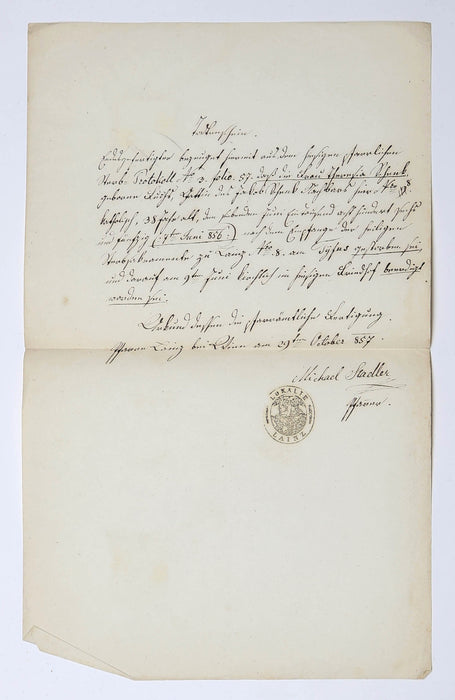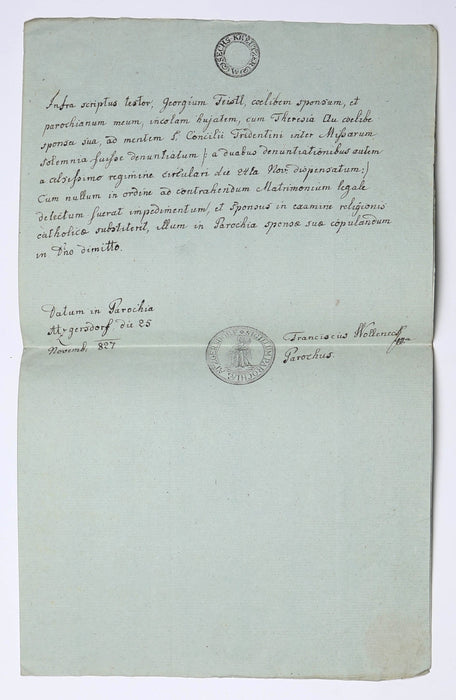
GETTING MARRIED IN AUSTRIA
[Heizing, Austria] Archive of letters and certificates. c.1820-1860.
This archive, of documents, letters, invoices, receipts, and administrative forms from the Austrian town of Heizing (now a suburb of Vienna), gives a fascinating insight into the ways in which the Habsburg state and the church combined in the regulation of everyday life, and especially with regard to marriage, over four decades from the 1820s onwards.
In order to marry, it was necessary to go through a number of administrative and ecclesiastical hurdles. The couple needed to present birth certificates; it was also mandatory, between 1820 and 1869, to obtain from the Bezirksamt (local government office) a Politischer Ehekonsenz, a certificate granted only when the couple could demonstrate to officials that they had the means to support one another, and any children, without the risk of their becoming a burden to the state. This archive contains numerous examples; many again follow a simple printed form, filled in with the appropriate details and signed and stamped by the district governor, but we also find many that are entirely in manuscript, occasionally going into considerably more detail about the circumstances of the couple, as well as numerous letters written in support of applications.
In addition to these civil requirements, it was also necessary to provide certificates of confession. These generally (but not always) took the form of printed slips, signed and dated by the priest, and sometimes accompanied by a letter from the archiepiscopal consistory; a number of examples are present, in various different formats. The result, finally, is the Ehe-Meldschein, an example of which we find here, which states the lack of either legal or canonical impediments to marriage, with the proviso that if the groom is a minor, he also needs the permission of the guardianship office.
Besides these forms and letters, the archive also contains a number of notices, issued by the Bezirksamt, including marriage banns and death notices, as well as extensive correspondence between district authorities, local church bodies, and residents; the majority of these appear as sent, complete with postage marks and seals. Although most are connected to Heizing, a few bear the stamps of neighbouring towns.
Details
Archive of c.120 letters and certificates, various formats but mostly single sheet, including around 20 printed forms, completed in a variety of hands; on a mixture of plain and blue papers; almost all stamped and many retaining wax seals; dates ranging from the 1820s to 1859s, mostly Heizing, Austria, with some from neighbouring towns; some darkening around folds, and the odd torn edge (consistent with letter-opening) but otherwise remarkably fresh throughout.











